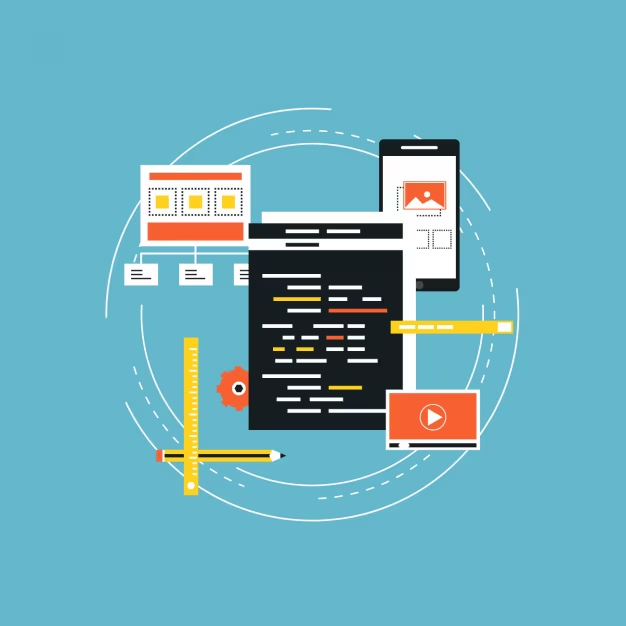User Interface (UI) and User Experience (UX) design are crucial aspects of app development that ensure an application is both visually appealing and easy to use. Here’s an in-depth look at both UI and UX design processes and best practices:
User Interface (UI) Design
Principles of UI Design
- Consistency: Ensure uniformity in design elements, such as colors, typography, and buttons, across the app to create a cohesive experience.
- Simplicity: Keep the design simple and intuitive, avoiding unnecessary elements that can clutter the interface.
- visibility: Make important features and options easily accessible and visible to users.
- Feedback: Provide feedback for user actions, such as button clicks, form submissions, or errors, to guide the user.
- Accesebility: Design for all users, including those with disabilities, by following accessibility guidelines (e.g., WCAG).
UI Design Process
-
Research and Analysis:
Understand user needs, preferences, and behaviors.
Analyze competitors’ designs for insights.
-
Wireframing:
Create low-fidelity wireframes to outline the app’s structure and layout. -
Prototyping:
Develop high-fidelity interactive prototypes to visualize the final product and test user interactions. -
Style Guide:
Create a style guide to document design standards and ensure consistency.
Tools for UI Design
- Wireframing: Balsamiq, Sketch, Figma
- Prototyping: InVision, Adobe XD, Axure
- Visual Design: Photoshop, Illustrator, Sketch, Figma
- Design Systems: Storybook, Pattern Lab
User Experience (UX) Design
Principles of UX Design
- User-Centered Design: Focus on the needs and goals of the end-users throughout the design process.
- Usability: Ensure the app is easy to use, learn, and remember.
- Navigation: Create a clear and intuitive navigation structure that helps users find what they need quickly.
- Engagement: Design interactions that are engaging and keep users interested.
- Feedback: Collect and incorporate user feedback to continuously improve the app.
UX Design Process
-
User Research:
Conduct surveys, interviews, and usability tests to gather user insights.
Create user personas to represent different user types. -
Information Architecture (IA):
Organize and structure content logically.
Develop site maps and flowcharts to outline the user journey. -
Interaction Design:
Define how users will interact with the app.
Design interactive elements like buttons, forms, and menus. -
Usability Testing:
Test the app with real users to identify usability issues.
Iterate on the design based on feedback and test results. -
Implementation and Iteration:
Work closely with developers to ensure the design is implemented correctly.
Continuously gather user feedback and make improvements.
Tools for UX Design
- User Research: UserTesting, SurveyMonkey, Hotjar
- Information Architecture: MindMeister, OmniGraffle
- Prototyping: InVision, Figma, Adobe XD
- Usability Testing: Lookback, UsabilityHub
Best Practices for UI/UX Design
- User Feedback: Regularly collect and analyze user feedback to understand their needs and pain points.
- Iterative Design: Use an iterative approach to refine and improve the design based on user testing and feedback.
- Mobile-First Design: Design for mobile devices first, ensuring a seamless experience across all screen sizes.
- Microinteractions: Include subtle animations and interactions to enhance the user experience.
- Performance Optimization: Ensure the app loads quickly and performs smoothly, as performance directly impacts UX.
